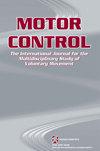Visual, Vestibular, and Proprioceptive Dependency of the Control of Posture in Chronic Neck Pain Patients.
IF 0.9
4区 医学
Q4 NEUROSCIENCES
引用次数: 0
Abstract
Sensory reweighting of postural control was compared in participants with and without neck pain. Center of pressure variables of 60 volunteers, the same in each group, were calculated under four standing conditions: (a) eyes open, neutral head posture; (b) foam interface, eyes open; (c) cervical extension, eyes open; and (d) cervical extension, eyes closed. All center of pressure variables except anterior posterior range/velocity increased significantly in Condition 2 compared with Conditions 1 and 3 (p < .001) and in Condition 4 compared with Conditions 1 and 3. The mediolateral range/velocity and path length in both groups, anterior posterior range in patients, and center of pressure area in the control group were significantly different between Conditions 2 and 4 (p < .001). No overweighting was observed on the vestibular or visual afferents in patients. Compensatory strategies seem to lie within the proprioceptive system.慢性颈痛患者体位控制的视觉、前庭和本体感觉依赖性。
在有和没有颈部疼痛的参与者中,对姿势控制的感觉重加权进行了比较。60名志愿者的压力中心变量,每组相同,在四种站立条件下计算:(a)睁开眼睛,中性头姿势;(b) 泡沫界面,睁开眼睛;(c) 颈部伸展,眼睛睁开;(d)颈部伸展,闭上眼睛。除前后范围/速度外,所有压力中心变量在条件2中与条件1和条件3相比均显著增加(p<0.001),在条件4中与条件1或条件3相比也显著增加。两组的内侧范围/速度和路径长度、患者的前后范围以及对照组的压力区中心在条件2和条件4之间有显著差异(p<0.001)。患者的前庭或视觉传入没有观察到加重。补偿策略似乎属于本体感觉系统。
本文章由计算机程序翻译,如有差异,请以英文原文为准。
求助全文
约1分钟内获得全文
求助全文
来源期刊

Motor Control
医学-神经科学
CiteScore
1.80
自引率
9.10%
发文量
48
审稿时长
>12 weeks
期刊介绍:
Motor Control (MC), a peer-reviewed journal, provides a multidisciplinary examination of human movement across the lifespan. To keep you abreast of current developments in the field of motor control, it offers timely coverage of important topics, including issues related to motor disorders. This international journal publishes many types of research papers, from clinical experimental to modeling and theoretical studies. These papers come from such varied disciplines as biomechanics, kinesiology, neurophysiology, neuroscience, psychology, physical medicine, and rehabilitation.
Motor Control, the official journal of the International Society of Motor Control, is designed to provide a multidisciplinary forum for the exchange of scientific information on the control of human movement across the lifespan, including issues related to motor disorders.
Motor Control encourages submission of papers from a variety of disciplines including, but not limited to, biomechanics, kinesiology, neurophysiology, neuroscience, psychology, physical medicine, and rehabilitation. This peer-reviewed journal publishes a wide variety of types of research papers including clinical experimental, modeling, and theoretical studies. To be considered for publication, papers should clearly demonstrate a contribution to the understanding of control of movement.
In addition to publishing research papers, Motor Control publishes review articles, quick communications, commentaries, target articles, and book reviews. When warranted, an entire issue may be devoted to a specific topic within the area of motor control.
 求助内容:
求助内容: 应助结果提醒方式:
应助结果提醒方式:


